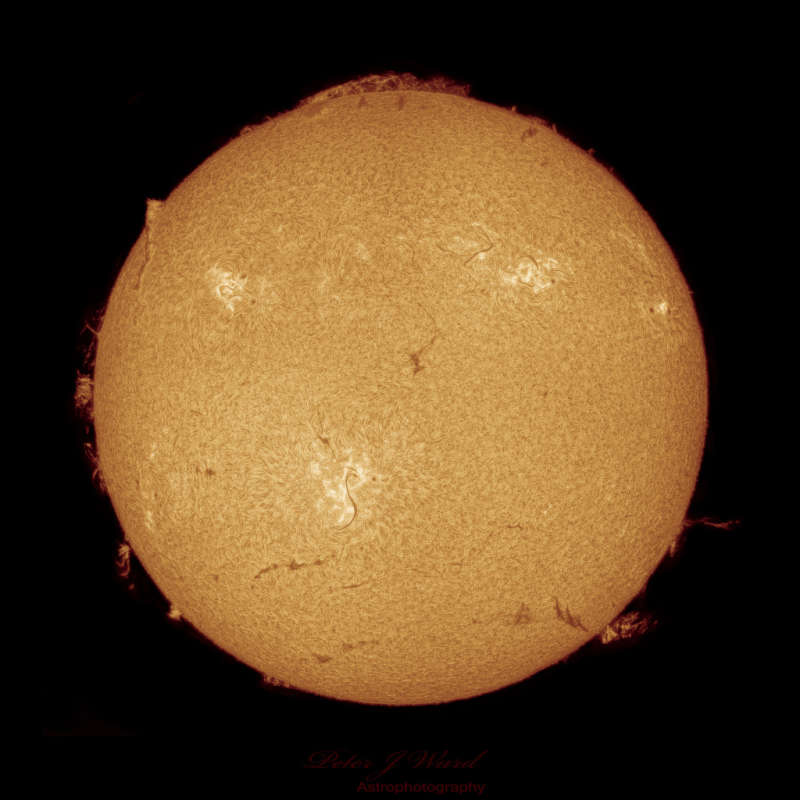
|
Credit & Copyright: Peter Ward
(Barden Ridge Observatory)
Explanation:
Perihelion
for 2023,
Earth's closest approach to the Sun,
was on January 4 at 16:17 UTC.
That was less than 24 hours after this
sharp image of the Sun's
disk
was recorded with telescope and
H-alpha filter from Sidney, Australia, planet Earth.
An
H-alpha filter
transmits a characteristic red light from hydrogen atoms.
In views of the Sun it emphasizes the Sun's chromosphere,
a region
just above
the solar photosphere or normally visible solar surface.
In this H-alpha image of the
increasingly
active Sun
planet-sized sunspot regions are dominated
by bright splotches called plages.
Dark filaments of plasma
snaking across the solar disk transition
to bright prominences when seen
above the solar limb.
|
January February March April May June July August September October November December |
| |||||||||||||||||||||||||||||||||||||||||||||||||||||||
NASA Web Site Statements, Warnings, and Disclaimers
NASA Official: Jay Norris. Specific rights apply.
A service of: LHEA at NASA / GSFC
& Michigan Tech. U.
Based on Astronomy Picture
Of the Day
Publications with keywords: perihelion - Sun
Publications with words: perihelion - Sun
See also:
- APOD: 2025 December 7 Á The Sun and Its Missing Colors
- APOD: 2025 May 21 Á International Space Station Crosses the Sun
- APOD: 2025 March 16 Á Venus and the Triply Ultraviolet Sun
- Welcome to Perihelion
- APOD: 2024 September 2 Á A Triangular Prominence Hovers Over the Sun
- APOD: 2024 August 18 Á A Solar Prominence Eruption from SDO
- APOD: 2024 August 4 Á Gaia: Here Comes the Sun
